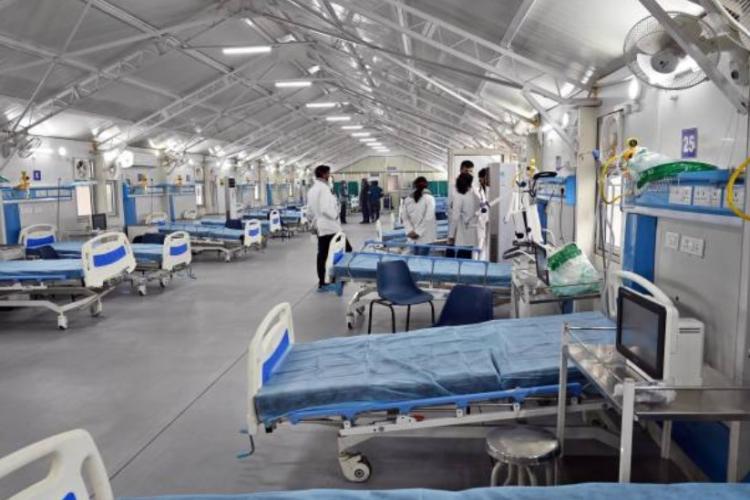The Union Budget 2025-26 has allocated approximately 10% more funds to the health sector compared with the last budget. While this increase signals a continued focus on healthcare, it is important to assess it in the right context. A significant portion of the increased allocation in previous years was due to one-time expenditures such as COVID-19 vaccination and other emergency pandemic response measures.
Despite the higher Budget allocation, India’s health expenditure remains low compared with other major economies. In 2021, India’s health spending was just 3.28% of GDP (World Bank), lagging behind countries like Thailand (5.16%), Singapore (5.57%), China (5.38%), Brazil (9.89%), Indonesia (3.71%), Russia (7.39%), the UK (12.36%), the US (17.36%), and South Africa (8.27%). For a nation of 1.4 billion people, aiming to achieve developed economy status by 2047, this level of spending is inadequate. Healthcare is not just a social issue—it is a critical factor in economic growth.
READ | Critical minerals: India’s new mission looks to break China’s grip
A healthy workforce is essential for sustained productivity, yet India faces a growing burden of lifestyle diseases, with young individuals increasingly affected by conditions such as heart disease, diabetes, kidney failure, cancer, and depression.
Budget 2025-26: Proposals for healthcare
Cancer care centres: The announcement of district-level cancer care centres is a step in the right direction. These centres could lower treatment costs, enhance convenience, and improve patient monitoring. However, their success hinges on effective execution. A comprehensive approach is required—one that goes beyond infrastructure to include skilled personnel, a reliable supply chain for medicines, and technological integration, such as telemedicine. Many district hospitals are already understaffed, raising concerns about the availability of trained oncologists and support staff.
Customs duty exemptions: The Budget has introduced customs duty exemptions for 37 additional specified drugs and medicines under Patient Assistance Programs (PAPs), along with 13 new PAPs offering free medicines from pharmaceutical companies. While this measure is welcome, the extent to which these cost savings will be passed on to patients remains uncertain. Moreover, access to PAPs is often restricted, limiting their real-world impact.
Even with these exemptions, many critical medications remain prohibitively expensive, particularly for patients lacking private insurance or sufficient government support. Furthermore, treatment costs extend beyond medication to include diagnostic tests, management of side effects, doctor consultations, and travel expenses—burdens that remain largely unaddressed.
Medical education expansion: Budget 2025-26 also announced a significant expansion in medical seats. While increasing the number of medical graduates is important, quality must not be compromised. The medical profession in India is already grappling with declining public trust and rising instances of violence against healthcare providers.
Merely increasing MBBS seats does not guarantee better public health outcomes. The real bottleneck lies in the limited number of postgraduate (PG) seats and the scarcity of structured employment opportunities for MBBS graduates. Many graduates spend years preparing for NEET PG exams, while corporate hospitals offer them low salaries and public sector jobs remain limited. In some Tier 2 and Tier 3 cities, Ayurveda graduates are managing ICUs at lower wages, while MBBS graduates struggle to find jobs—posing serious risks to patient safety.
To address this, MBBS graduates need better training, increased exposure to outpatient management, and more hands-on patient care experience. Reducing the theoretical load and clerical duties during internships could also help. Without integrating a larger number of doctors into the public healthcare system, the expansion of undergraduate seats may end up benefiting only the private sector by creating a steady supply of low-cost labour.
The Economic Survey highlights the stark earnings gap within the medical profession: a new medical graduate earns around Rs 5 lakh annually, while a senior doctor in urban areas earns between Rs 12.5 lakh and Rs 18.4 lakh per year. Addressing this disparity is crucial for improving healthcare delivery and retaining medical talent within the country.
Medical tourism: The budget also emphasises medical tourism through the ‘Heal in India’ initiative. While India has the potential to become a global healthcare destination, significant improvements are needed, particularly in Tier 2 and Tier 3 cities. Upgrading existing infrastructure and ensuring consistent quality standards are essential.
However, concerns persist regarding the financial viability of public-private partnerships. In states like Punjab and Haryana, private hospitals have refused to treat Ayushman Bharat patients due to unpaid dues. If such issues are not addressed, attracting foreign patients while ensuring affordable healthcare for Indian citizens could become increasingly difficult.
Insurance for gig workers: The announcement of health insurance for gig workers is a positive step, but details remain unclear—particularly whether coverage extends to their families. Furthermore, the success of this initiative depends on mandatory data-sharing with the e-Shram portal. Without stringent compliance mechanisms, many workers might struggle to access these benefits. The government must enforce strict accountability, requiring all platform companies to register their workers and contribute to social security schemes.
Anganwadi and Poshan 2.0: The budget also promises to strengthen the Anganwadi and Poshan 2.0 initiatives, which support millions of children, pregnant and breastfeeding women, and adolescent girls. While additional funding is a positive move, it is essential to analyse why long-standing issues such as anaemia in women and stunting and wasting in children have persisted despite these programs. Simply increasing budget allocations without addressing systemic bottlenecks will likely yield minimal improvements.
The Union Budget 2025-26 makes several commendable announcements for the health sector, including increased allocations, district-level cancer centres, medical education expansion, and insurance for gig workers. However, the real challenge lies in execution.
Without addressing workforce shortages, ensuring financial sustainability in public-private partnerships, and enhancing the effectiveness of existing programs, the budget’s impact may be limited. A more holistic approach—one that prioritises accessibility, quality, and accountability—is essential to ensure that India’s healthcare sector truly meets the needs of its people and supports the nation’s economic aspirations.
Urvashi Prasad is former Director, Office of Vice Chairperson, NITI Aayog.

